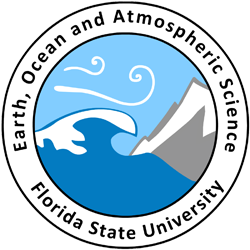Research
Research in the Huettel lab addresses sediment ecology in the continental margin with focus on biogeochemical processes in the shallow inner shelf environment.
The shelf thus plays a central role for biological and chemical processes in the oceans, is habitat and foraging ground for a vast number of marine species and is of immense economical value. A large fraction of the global human population lives near the coast, and we extract a substantial part of our nutrition from the shelf. The coastal concentration of human activities also places significant pressure on the shelf ecosystems. Situated at the interface between land and ocean, the inner shelf is strongly impacted by the terrestrial environment and anthropogenic activities, and controls to a large extent what reaches the deep ocean. We are investigating this filter function of the shelf.
Rivers, groundwater, and runoff from land discharge large volumes of freshwater loaded with nutrients and pollutants into the coastal ocean. Precipitation couples the continental atmosphere, enriched in greenhouse gases and particles, to the shelf seas. Here the relatively shallow depths limit the dilution of nutrients and pollutants exported from land, amplifying biological and chemical processes. The enhanced nutrient concentrations lead to intense primary production in shelf waters providing the base for the highly prolific foodweb of the shelf. Our research quantifies production and decomposition processes in the shelf with focus on the shallow coastal zone.
Because the average water depth of the shelf is only 65 m, a large fraction of the water column production can reach the seafloor, but also pollutants like microplastics or oil snow settle on the shelf sediments. The latter are shaped by coastal currents, tides, and waves, typically producing a grain size gradient as finer sediments settle in calmer, deeper waters. Microbes, plants, and animals process the materials delivered to the seafloor, recycling nutrients and some of the contaminants. Through the tight coupling of water column and seafloor processes, the shelf sediments have central functions as sinks and sources of nutrients and pollutants. In our lab, we characterize and quantify these functions.
Despite the central role of the shelf for humankind and the global ocean, many aspects of the functioning of coastal and shelf ecosystems are still poorly understood, partly due to their enormous diversity and variability. The temporal and spatial dynamics of the terrestrial input produce complex patterns of production and decomposition cycles that are further modulated by seasonal, annual, and decadal climate variations. Ocean warming and acidification superimposes global changes to all shelf environments causing continuous, often unpredictable, changes in the regional and local coastal processes. A main goal of our research therefore is to elucidate the spatial and temporal dynamics of biogeochemical processes in the shelf sediments.

